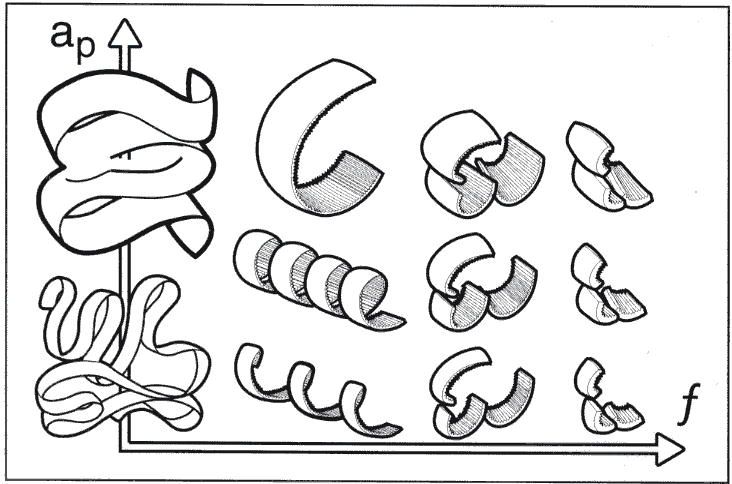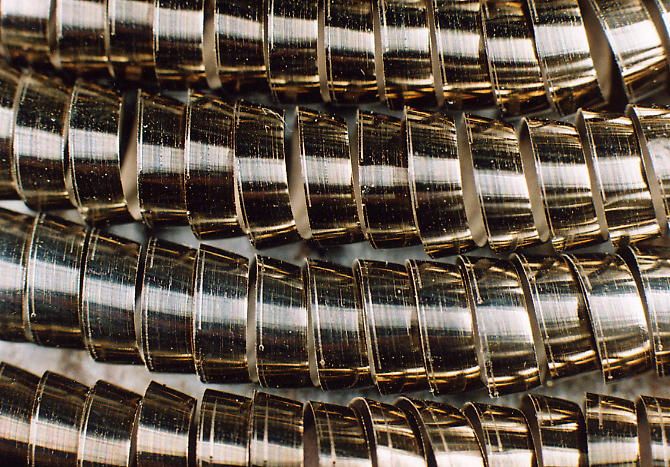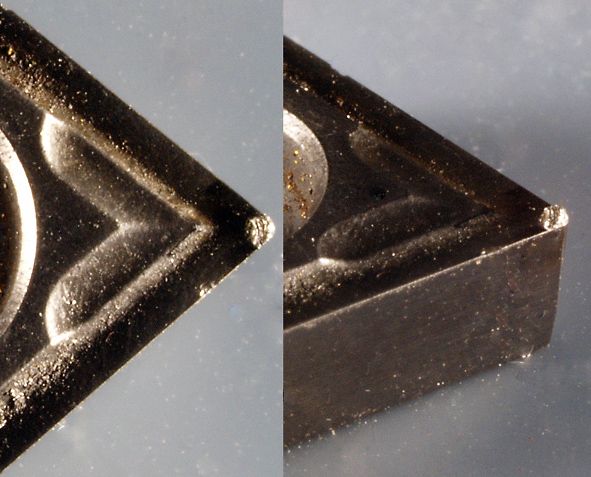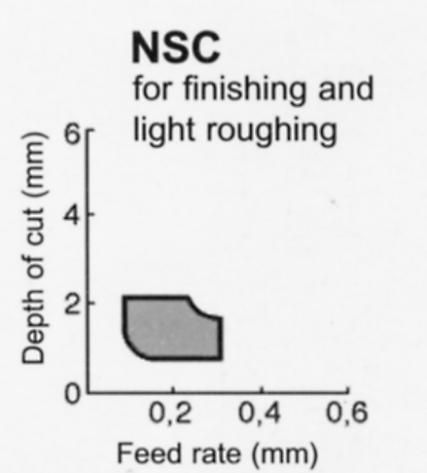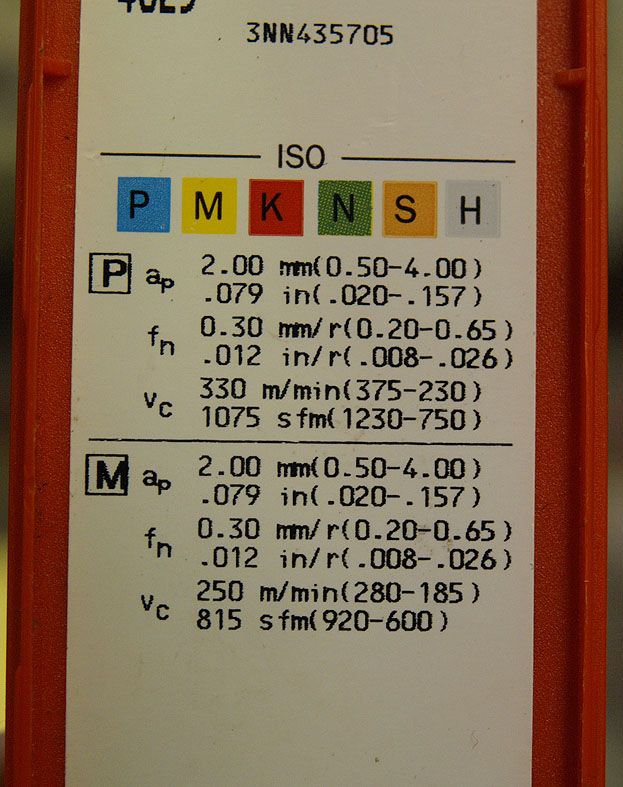JasonB:
Would it be possible for Caneng to suggest a few suffixes that we should look out for that would be suitable on hobby lathes
Blunt answer – no! Each manufacturer has his own designations, new ones are forever appearing, and some are for very specific cutting operations in specific materials.
I can, however, give some guidance based on experience. But before I start, I do not work for, and never have worked for, Sumitomo! I came across their tips umpty-one years ago, and the recommendation to try them out has been so succesful that I've never had any urge to use anything different for most of my work. They've cut steel, hardened steel, HSS, cast iron, stainless steel, copper, phosphor bronze, Tufnol, Floursint, even wood – just about everything except aluminium. All sorts of diameters and shapes, hexagon bar, square bar, rough and hard castings. So they do provide a good basis for identifying what a model engineer might want to write down as a purchasing specification for his tips. Here's the Sumitomo diagram that identifies the cutting region for the NSC geometry:

From that we get that the NSC geometry is intended to operate with depth of cuts in the range 0.5 – 2mm (0.020" – 0.080" ) and feed rates of 0.1 – 0.3mm/rev (0.004" – 0.012" ). Within those ranges they will cut and CHIP FORM exactly as their designer intended. However, they will work outside those ranges, albeit without 'correct' chip forming – but acceptable in a model engineering, non-production environment. I've used them down to 0.002"/rev feed (slow feed tumbler gear on the S7) with depth of cut from say half a thou up to 0.125" – that photograph of the swarf was 3mm d.o.c., can't remember the feed, probably 0.004"/rev., but definitely not chip forming correctly!
So a tip that will do d.o.c. 0.5 – 2 mm at feed 0.1 – 0.3mm/rev would be a good starting point. These tips would not be suitable:

ap is the d.o.c., fn is the feed range, Vc is the cutting speed. Don't worry about cutting speed, not significant for model engineers, and they'll all work outside those ranges. The speed ranges are for 15 minute tool life – cut faster and they'll wear out quicker, cut slower and they'll last longer. We're not worried about optimising tool life, and they'll all go faster than we would need anyway!
The coloured letters are the material classifications for which the tip is designed: P is virtually all 'normal' steels – unalloyed, low alloy, high alloy, cast steels. M are the stainless steels, K are the cast irons, plus aluminium alloys. The others are not relevant to model engineering activities. Well, maybe if you're building gas turbines…
The presence of cutting data for P and M materials shows that the tool is suited to cutting steels and stainless steels. But it would probably cut K as well, perfectly satisfactorily for our purposes, but not optimised for high performance on cast iron in industry.
Carbide grade – not something to get hung up on in any detail, we're not in need of optimising everything for production, so we can use less than optimum materials. I would suggest going for titanium carbides (cermets) or coated carbide grades, as these are good for minimising (but unfortunately not eliminating) BUE problems. The gold clour on tips is titanium nitride, so it's obvious that they're coated. But be aware that some coatings (e.g. Al2O3) are not gold, so not being gold coloured doesn't necessarily mean that it's not coated.
Coatings are also present to reduce things like flank wear on the tips, it's not all about BUE
Tip radius 0.2mm. Not as strong as 0.4mm, but a lot less trouble on a small machine.
But one thing you should NOT do is to buy el cheapo tips from a second hand tool dealer at an exhibition. And NEVER buy tips that are just piled up in a box where you rummage about for something that looks right Only buy tips in original boxes, and only in sealed boxes at that – if the seal is broken, don't touch 'em. I did that once, having dropped on a full box of Sumis at a good price – they wouldn't cut properly, and a trip to the microscope showed that every one was worn! Fortunately they were from a decent source and I got my money back. But I've never bought from them since that experience. Plenty of industrial grade suppliers around, better to stick to them as the source for your tips.
That's about the best I can do on advice, but for recommendations:
Sumitomo tips in T1200A titanium carbide, NSC chip breaker for turning and facing. For Martin's tool holders, CCGT060202-NSC/T1200A.
Sumitomo T1200A again for boring tools, but with the W chip breaker, it's brilliant. Beware – the W chip former is assymetrical, you will need the L (left) version for normal going right-to-left boring operations.
Parting – only ever used Iscar tips and blades. Tried several variants of carbide, coating, chip former, never found much difference between them. Problem with parting tools is that blades and tips are manufacturer specific – an Iscar blade will only take Iscar tips, you can't mix manufacturers.
Hope that helps!
Edited By Cabeng on 12/09/2013 15:03:18
Edited By JasonB on 12/09/2013 15:59:24
Anonymous.


